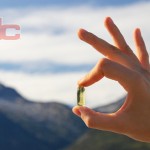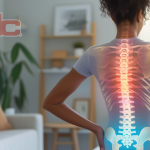Doctors, imagine a modality that achieves proven results treating severe disc pathology, where the patient feels nothing during the treatment, and typically falls asleep. That’s the SpineMED® Decompression System.
If you haven’t experienced a modality of this caliber, then perhaps it is time to look into it.
SpineMED® is the most efficient and advanced decompression system available, and is the only device with its patented system that captures the skeletal structure directly, and applies distraction forces directly to the spine, bypassing energy delivery throughout the torso as all other distraction devices do. This efficient delivery of distraction force directly to the disc level eliminates all of the side effects common with other decompression systems.
A gentle alternative
Through gentle distraction and decompression of injured discs, the FDA-cleared SpineMED® Decompression System creates conditions that allow the body’s natural healing processes to take hold. Magnetic resonance imaging after this therapy has shown both reduced disc herniation and increased disc hydration, visible evidence of the technique’s effectiveness.
Unlike older traction-style devices, which rely on nylon harnesses and forces equal to 60–75% of body weight,3 SpineMED® uses a patented pelvic restraint system that applies force directly to the skeletal structure. This allows decompression with just 10 to 15% of body weight.4 Patients do not feel any distraction during the treatment, making it remarkably comfortable—even for frail or elderly individuals. Sessions take place with the patient fully clothed, and most find the therapy relaxing; many even fall asleep.
With SpineMED®’s low-force, precise approach to decompression, DCs now have the capability of treating many more patients who were excluded from other forms of traction, such as acute cases, frail patients, geriatric patients and those with heightened sensitivity.
Only a few conditions present contraindications for this therapy, including spinal fractures and instabilities, bilateral pars defects, gross osteoporosis, spinal tumors, fixed surgical hardware in the area, pregnancy and being younger than 15. Others, such as severe arthritis, are relative and may still be treatable using the practitioner’s discretion.
Designed with the patient—and practitioner—in mind
The patient experience is at the heart of SpineMED®’s design, but its advantages extend to the practitioner as well. It fits into any treatment area with at least a 6- by 9.5-foot space available, while convenient casters on the table allow easy movement from room to room. Sessions require less than two minutes to set the patient up for treatment, and the treatment runs truly unattended, freeing chiropractic practice staff to continue with other responsibilities. The consistency of the pelvic restraint system means every session is repeatable, reducing variability and ensuring reliable results.
For the chiropractic practice, this ease of use translates into efficiency, smoother patient flow and the ability to see more patients without taking on additional staffing costs. With automated reporting and electronic charting, clinics can also streamline documentation and maintain comprehensive records. Together, these features make the system a powerful patient care tool as well as a smart business investment.
Final thoughts: More than reliable results and lasting relief
A standard SpineMED® protocol consists of 20 to 25 half-hour sessions, typically spread over four to six weeks. Each session builds on the last with many patients reporting steady improvements in function and reductions in pain, changes that often mean they can once again do the physical activities they love.
“The SpineMED® Spinal Decompression Table has been a game-changer for our patients suffering from disc-related conditions,” said Nik Dukovac, DC. “We consistently see life-changing results—patients who were once facing surgery or daily pain and disability are now returning to work, activity and joy.”5
References
- SpineMED Decompression System. SpineMED advantages white paper. Published January 2017. Accessed September 9, 2025.
- Vadivelu N, et al. Pain and psychology―a reciprocal relationship. Ochsner J. 2017;17(2):173-180. https://www.ncbi.nlm.nih.gov/pmc/articles/PMC5472077/. Accessed September 9, 2025.
- SpineMED Decompression System. SpineMED advantages. Accessed September 9, 2025.
- SpineMED Decompression System. SpineMED key points and advantages. Accessed September 9. 2025.
- SpineMED Decompression System. Effectively treating back and neck pain. Accessed September 9, 2025.










